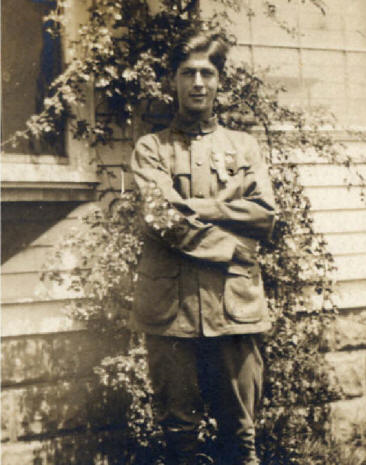During the proofing of the June 1911 “Official Handbook for Boys”, it stated that the highest award presented to a scout would be “Wolf Scout.” Then two months later when the same handbook was released again in August, the highest award would be the “Eagle Scout.” In 1911, Eagle was not a rank, but rather a part of the merit badge system that recognized Scouts who had earned a specified number of merit badges. A First Class Scout could earn their Eagle after earning 21 merit badges, including five required merit badges, First Aid, Athletics, Lifesaving, Personal Health, and Public Health.
The rank structure developed by Robert S. Baden-Powell, the British founder of worldwide Scouting, was based on three ranks, Tenderfoot, Second Class, and First Class. The requirements for advancement to these ranks bear little resemblance to the tasks required today.
Tenderfoot
To become a Tenderfoot, a scout must have attained the age of 12, must know the Scout Law, the Scout Sign, the Scout Salute and be able to explain the significance of the badge. He must also know the composition and history of the national flag (then Great Britain) and the customary forms of respect for the flag. To display his knowledge of Scout Craft, he must also tie four knots out of the nine choices (: square or reef, sheet-bend, bowline, fisherman’s, sheepshank, halter, clove hitch, timber hitch, or two half hitches).
Second-Class
To advance to Second-Class he must serve at least a month as a Tenderfoot and demonstrate proficiency in eight categories of Scout Craft, such as:
- He must demonstrate elementary first aid and bandaging; know the general directions for first aid for injuries; know treatment for fainting, shock, fractures, bruises, sprains, injuries in which the skin is broken, burns, and scalds; demonstrate how to carry injured, and the use of the triangular and roller bandages and tourniquet,
- He must demonstrate elementary signaling: Know the semaphore, or American Morse, or Myer alphabet,
- He must track half a mile in twenty-five minutes; or, if in town, describe satisfactorily the contents of one store window out of four observed for one minute each,
- He must go a mile in twelve minutes at scout’s pace–about fifty steps running and fifty walking, alternately,
- He must demonstrate how to properly use a knife or hatchet,
- Prove his ability to build a fire in the open, using not more than two matches and then cook a quarter of a pound of meat and two potatoes in the open without the ordinary kitchen cooking utensils,
- He must earn and deposit at least one dollar in a public bank,
- And, he must know the sixteen principal points of the compass.
First-Class
To earn the First-Class rank a scout must be a second-Class scout and:
- Swim fifty yards,
- Earn and deposit at least two dollars in a public bank,
- Send and receive a message by semaphore, or American Morse, or Myer alphabet, sixteen letters per minute,
- Make a round trip alone (or with another scout) to a point at least seven miles away, going on foot or rowing boat, and write a satisfactory account of the trip and things observed,
- Advanced first aid: Know the methods for panic prevention; what to do in case of fire and ice, electric and gas accidents; how to help in case of runaway horse, mad dog, or snake bite; treatment for dislocations, unconsciousness, poisoning, fainting, apoplexy, sunstroke, heat exhaustion, and freezing; know treatment for sunburn, ivy poisoning, bites and stings, nosebleed, earache, toothache, inflammation or grit in eye, cramp or stomach ache and chills; demonstrate artificial respiration,
- Prepare and cook satisfactorily, in the open, without regular kitchen utensils, two of the following articles as may be directed. Eggs, bacon, hunter’s stew, fish, fowl, game, pancakes, hoe-cake, biscuit, hardtack or a “twist,” baked on a stick; explain to another boy the methods followed,
- Read a map correctly, and draw, from field notes made on the spot, an intelligible rough sketch map, indicating by their proper marks important buildings, roads, trolley lines, main landmarks, principal elevations, etc. Point out a compass direction without the help of the compass,
- Use properly an axe for felling or trimming light timber; or produce an article of carpentry or cabinet-making or metal work made by himself. Explain the method followed,
- Judge distance, size, number, height and weight within 25 per cent,
- Describe fully from observation ten species of trees or plants, including poison ivy, by their bark, leaves, flowers, fruit, or scent; or six species of wild birds by their plumage, notes, tracks, or habits; or six species of native wild animals by their form, color, call, tracks, or habits; find the North Star, and name and describe at least three constellations of stars,
- Furnish satisfactory evidence that he has put into practice in his daily life the principles of the scout oath and law,
- And finally, enlist a boy trained by himself in the requirements of a tenderfoot.
Merit Badges
When a scout attains the rank of First-Class, he is then qualified to earn merit badges. Upon earning a merit badge, the scout was then are entitled to place after their names the insignia of the badges won. For instance, if he has successfully passed the signaling and seamanship tests, he signs his name in this manner–
Life, Star, and Eagle ranks (in that order) were earned as merit badges. The Life-Star order was later reversed to the current order Star then Life in 1924.
Additionally, there was no mention of a service project. The closest mention of service was added in 1927 when Eagle Scout began the transition from being a super merit badge to a rank. A requirement was added to the rank stating vaguely that the scout have a
“record of satisfactory service” with his troop.
As Always, Be Prepared.








